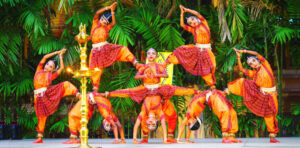GS I Art and Culture

Origins and Historical Background
- Gotipua originated in Odisha during the 16th century, under the reign of Bhoi king Rama Chandra Dev.
- The term ‘Gotipua’ is derived from the Oriya language, where ‘Goti’ means single and ‘Pua’ means boy.
- This dance form developed as a male counterpart to the fading Mahari dance tradition, which was previously performed by Devadasis as a ritual offering at Puri’s Jagannath Temple.
- Gotipua is considered the forerunner of Odissi dance, influencing its evolution over time.
Dance Techniques and Training
- The dance style is characterized by two primary postures:
- Tribhangi – A three-fold bending of the body at the head, torso, and knees.
- Chouka – A square-like stance representing Lord Jagannath.
- A unique aspect of Gotipua is that dancers sing while performing, blending vocal and physical expressions.
- The upper body movements of the dance are inspired by the waves of Odisha’s coastline.
- Training is intensive, requiring proficiency in singing, dance, yoga, and acrobatics.
Costume and Performance Elements
- The dancers, who are young boys, grow long hair and adorn themselves with floral garlands.
- Their makeup consists of white and red powders, enhancing their feminine appearance.
- Gotipua is performed as an offering to Lord Jagannath and Lord Krishna.
Decline of Gotipua
- As dancers reach puberty, they often retire from performing due to a loss of flexibility and the inability to maintain the feminine persona required for the dance.
- The tradition is deeply rooted in Odisha’s temple culture, with representations of Gotipua dancers found in sculptures at the Konark Sun Temple and Jagannath Temple in Puri.




